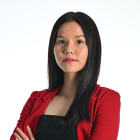Excessive screen time – our eyes are bearing the greatest brunt and the long-term damage is worrying
Staring at screens for hours has become routine for many Singaporeans, and it's taking a toll on their eyes. Doctors warn that digital eye strain, once brushed off as fatigue, is now a growing public health issue linked to long-term vision problems.
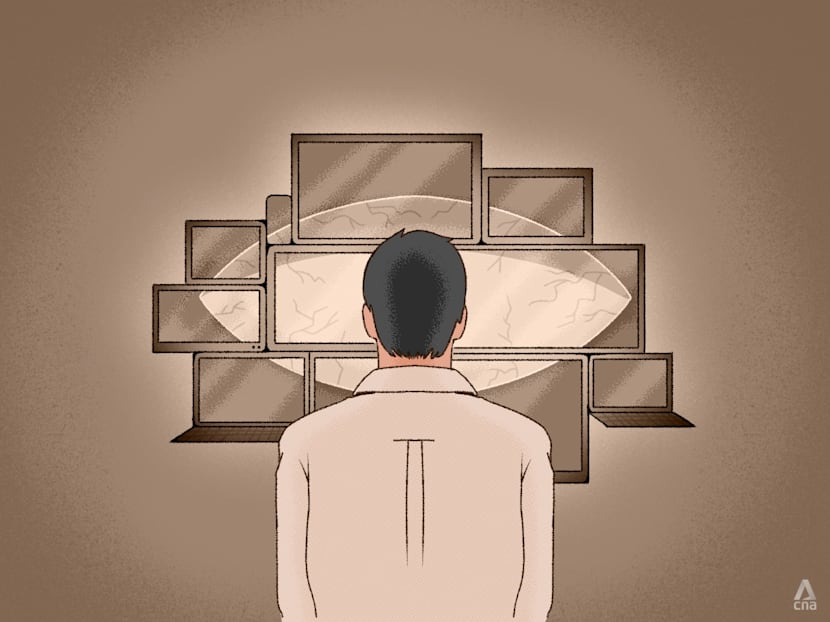
Studies estimate that between 5 and 65 per cent of people worldwide experience symptoms of digital eye strain. (Illustration: CNA/Nurjannah Suhaimi)

This audio is generated by an AI tool.
A typical day in Ms Ho Hui Yi's life usually unfolds in a blur of screens.
As the head of partnerships and marketing in a fast-paced fintech environment, the 33-year-old's life is almost entirely digital. On top of that, she has been wearing glasses since the age of eight due to myopia and astigmatism.
Ms Ho spends much of her work day staring at multiple monitors, engaging in online chats and constantly checking her phone – a routine that has taken a toll on her eyes.
In recent years, she has been experiencing itchy, dry eyes and occasional blurred vision. To cope, she turns to a small arsenal of remedies – eye drops, lutein supplements and steam masks, which offer a warm compress for her eyes.
"Eye strain definitely affects my creativity and energy. Unlike traditional office jobs, where you might have breaks away from the screen, (the nature of my work) is designed for constant connectivity from Discord servers to Telegram chats and dashboards," she told CNA TODAY.
"If I'm not at my laptop, I'm still glued to my phone. The work is mentally rewarding and stimulating, but it does take a toll physically."
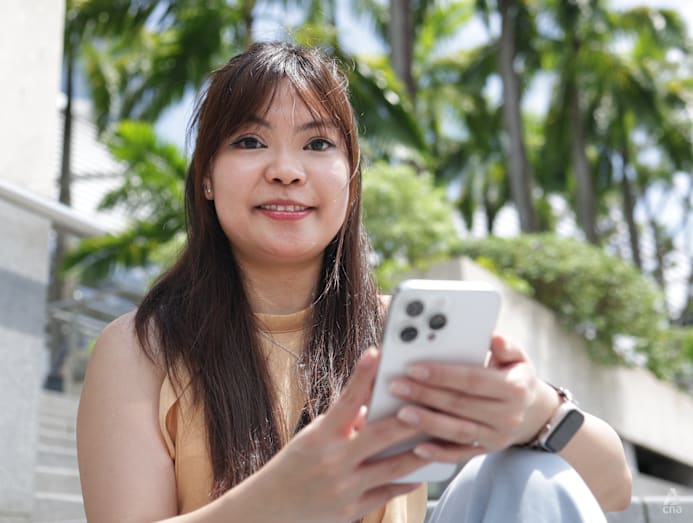
Similarly, 28-year-old tech startup co-founder Mr Viaano Spruyt spends roughly 14 to 16 hours a day in front of screens. Blurred vision, migraines and insomnia have plagued him over the past two years, with insomnia being the most persistent.
Diagnosed with astigmatism five years ago, he initially thought the condition was "not a big issue" as he'd been wearing glasses since childhood.
"As I began working more intensively on my startup, the condition became much more pronounced," Mr Spruyt said.
"My optometrist explained that the constant close-up work with digital screens was worsening the astigmatism, and that my eyes were straining in ways that could lead to further vision deterioration if I didn't start managing my screen habits."
He started using eye drops but they only offered short-term relief at best, rather than eliminating the strain.
Then, there is Mr Mark Yeow, 35, founder of a digital agency, who manages glaucoma alongside chronic eye strain and tension headaches – struggles that were part of the reason he left his previous full-time job to start his own business.
"My vision couldn't handle the long hours at the computer anymore. And I was always worried about whether I was trading my sight for a paycheck."
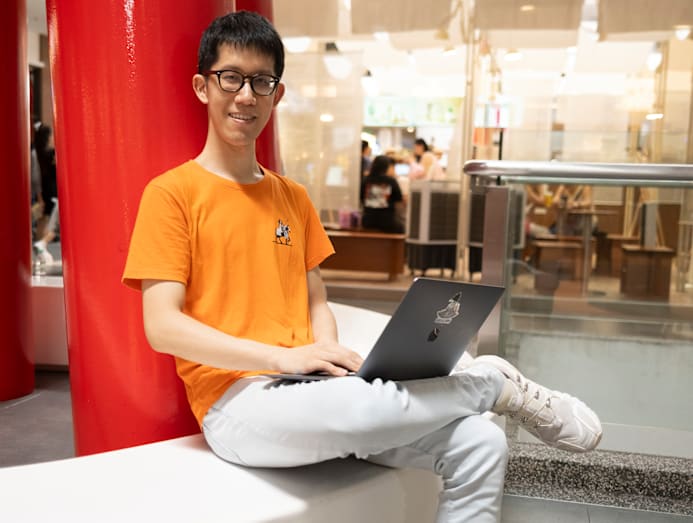
What Ms Ho, Mr Spruyt and Mr Yeow are experiencing is emblematic of a growing problem. While much has been written about the toll of excessive screen time on mental health, less attention has been paid to its physical impact, particularly on the eyes.
Optometrists and ophthalmologists CNA TODAY spoke to said they are seeing increasing numbers of younger adults, often in their 20s and 30s, coming to them with complaints once seen mainly in middle-aged patients.
Even more concerning, the experts said, a similar trend is emerging with early-onset presbyopia. It is an age-related difficulty with near vision – essentially the reason many people eventually need reading glasses. Once expected only in the mid-40s or later, this eye condition is now appearing in patients as young as their mid-30s.
Together with digital eye strain and dry eye, these conditions reflect a broader pattern of eye problems associated with modern lifestyles. The same habits are also fuelling the rise of early-onset myopia in children, a structural change to the eye that carries serious long-term risks.
Professor Cheng Ching-Yu, director of the Centre for Innovation and Precision Eye Health at the National University of Singapore, noted that digital eye strain, early-onset presbyopia and dry eye syndrome share a common feature: they are influenced not only by ageing but also by digital lifestyles, such as extended screen exposure, prolonged near work and reduced outdoor time.
Near work refers to tasks that require focusing the eyes on objects at close range, typically within 30 to 50 cm, such as reading, writing, or using digital devices.
"While good habits matter, the scale of digital device use today makes (these conditions) a broader public health concern that calls for both individual and systemic solutions," he said, adding that they can no longer be seen as merely personal issues.
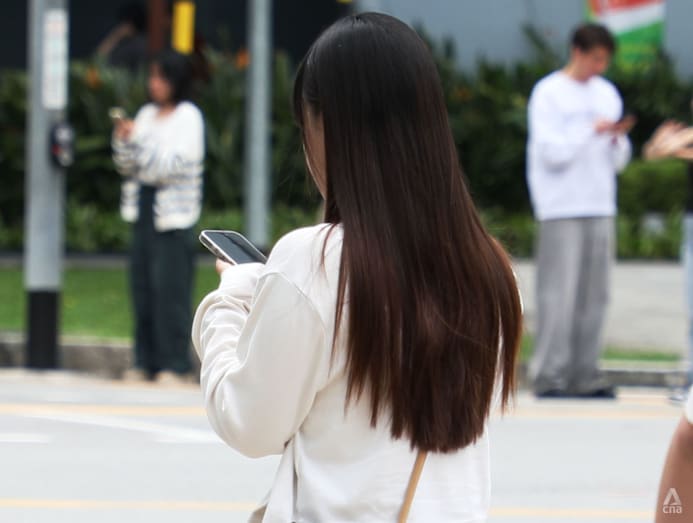
DIGITAL EYE STRAIN ON THE RISE
Singapore currently lacks recent nationally representative data on digital eye strain, but international and regional studies suggest it is increasingly common among younger age groups around the world, said Prof Cheng, who is also a leading researcher in the epidemiology and genetics of blinding eye diseases.
Studies estimate that between 5 and 65 per cent of people worldwide experience symptoms of digital eye strain. Since the COVID-19 pandemic, student-focused research has found that about half of respondents or more also exhibit symptoms, he added.
With young Singaporeans also spending long hours on screens, Prof Cheng said digital eye strain is "a plausible and growing concern" here, even without national data.
Digital eye strain manifests in fatigue, dry or itchy eyes, blurred vision and headaches. While these may seem like minor irritations, doctors warned that the effects build up over time, affecting both comfort and long-term eye health.
Dr Daphne Han, medical director and senior consultant ophthalmologist at LSC Eye Clinic, said the trend is unmistakable.
"There are more instances of patients of all age groups who present with complaints of dry and tired eyes and blurring of vision, most commonly associated with prolonged use of digital devices, which itself is increasingly pervasive."
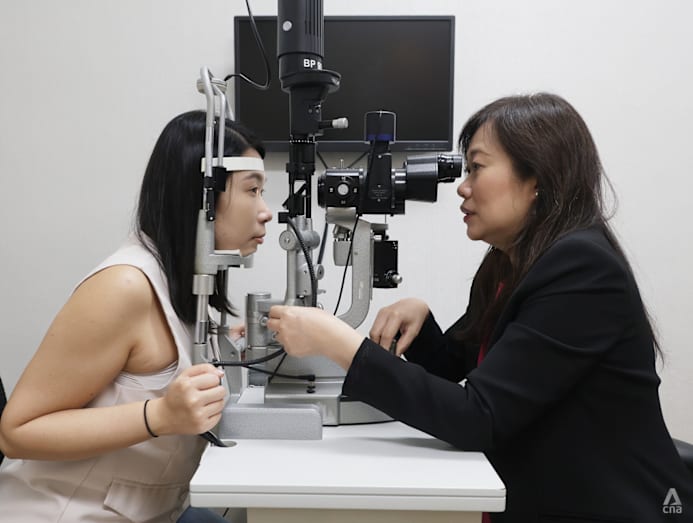
The problem also cuts across demographics.
"IT professionals, finance workers, students and even housewives binge-watching dramas late into the night – practically anyone can suffer from digital eye strain," said Dr Clarissa Cheng, senior consultant ophthalmologist at Lumin Eye Specialists.
Optometrists are noticing similar patterns of digital eye strain as well, especially among office workers and students. Mr Lee Kang Lian, president of the Singapore Optometric Association, said that he has seen an increase in cases of binocular vision problems, dry eye and headaches in recent years.
Binocular vision problems occur when the eyes struggle to work together, leading to strain or double vision. Dry eye happens when the eyes do not produce enough tears, or when tears evaporate too quickly.
"During an eye examination, it is important for patients to share any symptoms such as eye strain or tiredness from prolonged near work.
"Vision is much more than just clarity. It is a complex system that directly affects our productivity, comfort and even emotional well-being when functioning optimally," Mr Lee added.
Traditional Chinese medicine (TCM) practitioners are also seeing more young adults with digital eye strain, presenting with "dry, gritty and irritated" eyes, headaches and sensitivity to bright light.
Dr Jolene Chong, medical director and TCM physician specialising in eye health at Gen Eye TCM, said that based on her clinical observations, cases of digital eye strain and dry eyes have more than doubled in recent years, driven by Singapore’s increasingly digital lifestyle.
She explained that according to the principles of TCM, the eyes are seen as a direct reflection of the liver's condition, and prolonged screen use depletes both the "liver's blood" and the "kidney's yin" – the eyes' major sources of nourishment.
"Excessive screen use, combined with other 'yin-depleting' habits like late-night work and stress, is creating a perfect storm for chronic eye-related issues."
Dr Foo Li Lian, a consultant ophthalmologist and clinical director at the Myopia Centre, Singapore National Eye Centre (SNEC), added that long-term digital eye strain can lead to increased dry eyes, poor ocular surface health and a lowered quality of life.
She noted that these issues impact not only vision but also psychological well-being over time, with some patients finding it difficult to enjoy activities like reading or performing office tasks requiring sustained near focus.
"Even a few minutes of reading can cause them to stop and close their eyes. This constant strain leads to pain, blurred vision, sudden tearing, and overall frustration. Excessive use of digital devices has also been associated with the development of squint in recent reports."
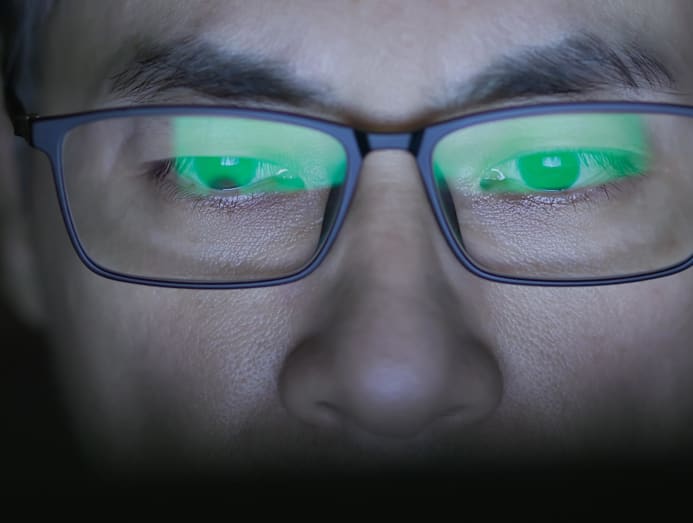
THE BURDEN OF MYOPIA
The same behaviours that contribute to digital eye strain in adults, such as prolonged near work, are also driving the rise of early-onset myopia in children, typically before the age of 10.
Dr Han said families often bring in children as young as preschool age, worried about their squinting or holding screens too close.
"Through our clinic's thorough check, a significant percentage of these kids are found to have digital eye strain or the onset of myopia," she said.
Data from SNEC shows that Singapore is among the countries with the highest rates of myopia in the world, with one in five children here being myopic by the age of seven.
Professor Saw Seang Mei, head of the myopia unit at the Singapore Eye Research Institute (SERI), said that myopia is primarily a lifelong disease that often starts in childhood, driven by environmental and lifestyle factors such as excessive near work and insufficient outdoor activity.
She noted that in Singapore, the average onset of myopia is around 8.5 years, though children can develop it as early as two or three. Myopia usually progresses until the early 20s, when eye and body growth stabilise.
Prof Saw stressed that myopia is not primarily a genetic disease.
"Myopia isn't like single-gene diseases, where one mutation causes the condition. Instead, hundreds of small genetic variants each play a role, but lifestyle factors, such as excessive near work and insufficient outdoor time, are often more influential.
"Of course, some children with healthy lifestyle habits may still develop myopia as the child may have a genetic disposition."
The greatest concern, she added, is high myopia, defined as worse than -6 diopters, or 600 degrees, which carries the highest risk of complications such as glaucoma, cataracts and myopic macular degeneration.
If the onset of myopia can be delayed until the late teenage years, progression is minimal and the likelihood of developing high myopia is much lower.
"If the onset of myopia can be delayed until the late teenage years, progression is minimal and the likelihood of developing high myopia is much lower. The real problem is when myopia begins in primary school or even preschool, because that gives it many more years to worsen."
Parents are already grappling with this reality at home. Entrepreneur Chen Weiwen, 41, said her 10-year-old son developed myopia at five, and his prescription has since climbed to -2.75/-2.50 despite using recognised interventions such as atropine eye drops and myopia-control lenses.
"The biggest challenge is not knowing how bad it can get. He has at least eight more years of growth, and his degree could easily hit 500 to 600 or more," she said.
"That brings fears of risks like retinal detachment and glaucoma, which can lead to blindness. It worries me even more as I come from a family of high myopes and my father nearly lost his sight from retinal detachment years ago."
Ms Daphne Ling, a mother of five children aged between nine and 17, said that the vision of three of her children has been worsening by 50 to 100 degrees each year, while the eyesight of the other two has remained relatively stable.
Despite strict rules of no more than an hour of screen time on weekdays and three to four hours on weekends, all five of her children are myopic.
Looking ahead, the 43-year-old admits to a sense of resignation about how worsening eyesight might affect her children's future. However, she has hopes that Lasik – laser-assisted in situ keratomileusis – can be a "game changer" for them, the way it was for her.
Ms Ling, a co-owner of an advertising agency, used to wear glasses before undergoing Lasik in 2015.
"Lasik restored my vision to perfect clarity, and I can wake up in the morning without needing to reach for my glasses. I'd highly recommend it once the kids are older," she said.
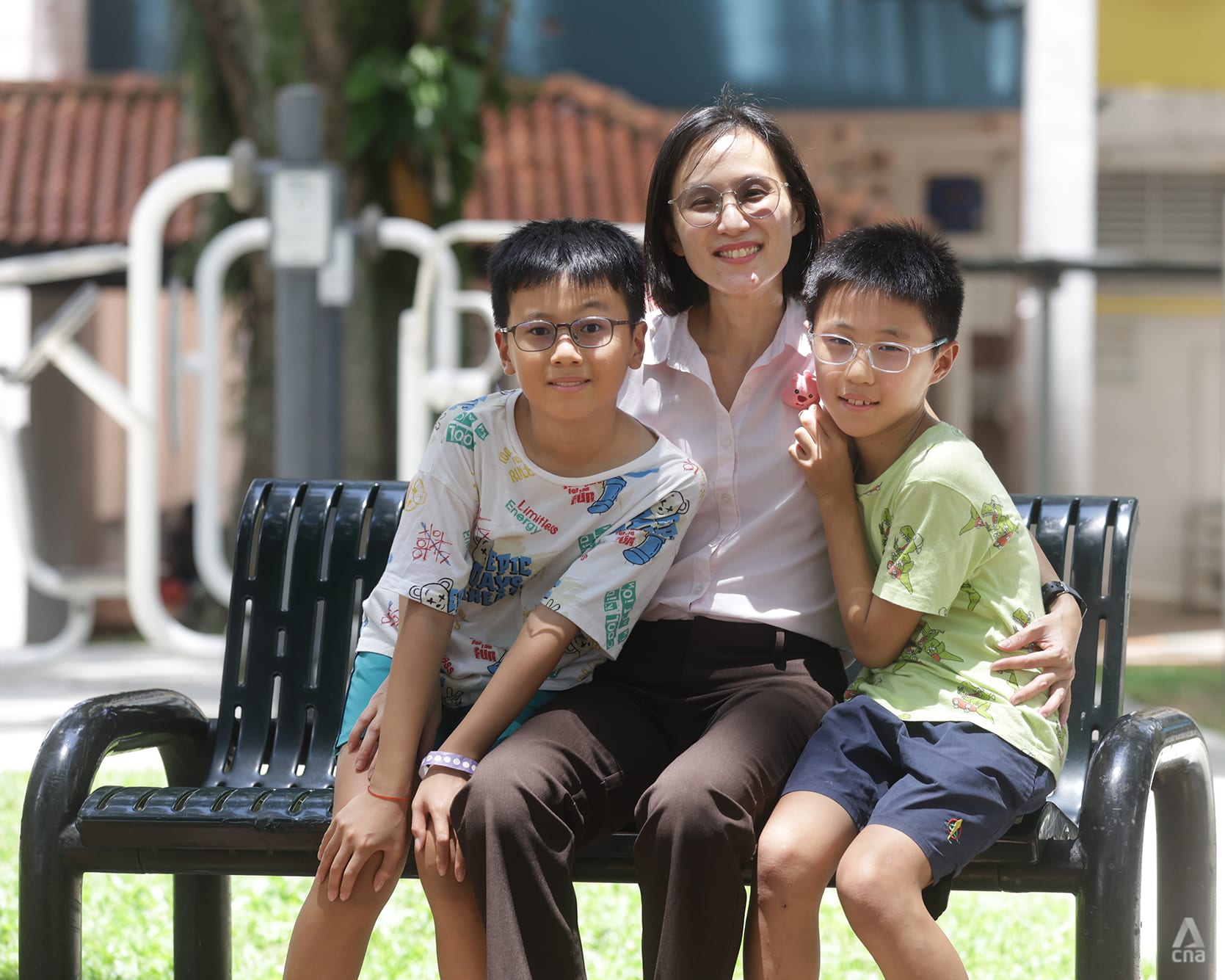
ARE REFRACTIVE SURGERIES THE SOLUTION?
Indeed, refractive surgery, particularly Lasik, has become a popular option for correcting poor eyesight and eliminating the inconvenience of wearing glasses.
Lasik involves reshaping the cornea with a laser so that light is focused correctly on the retina, reducing the need for glasses or contact lenses.
Other than Lasik, ophthalmologists observed that alternatives such as keratorefractive lenticule extraction (commonly known as SMILE) and implantable collamer lenses (ICL) are steadily gaining ground, though there are no recent public figures on how many Singaporeans are opting for each.
Smile is a newer form of laser vision correction that treats short-sightedness and astigmatism by removing a small piece of corneal tissue through a tiny keyhole incision, avoiding the need for a flap as in Lasik.
ICL is a procedure where a thin, artificial lens is placed inside the eye to correct high degrees of short- or long-sightedness, often for patients whose corneas are unsuitable for laser surgery.
Since 1992, SNEC has performed more than 75,000 refractive surgeries, with Lasik introduced in 1998 and newer techniques added in recent years to cater to a wider range of patients.
Surgery numbers dipped during the COVID-19 pandemic but rebounded sharply once restrictions eased, and have continued to rise since 2023, but SNEC did not provide recent annual figures.
But ophthalmologists CNA TODAY spoke to cautioned that none of these procedures is the silver bullet many assume them to be.
Dr David Chen, ophthalmology consultant at National University Hospital (NUH), said that while these procedures correct the degree of myopia and improve one's vision without glasses, they do not address the root cause of myopia.
"Myopia is due to an abnormally increased eyeball length, which increases risks like retinal detachment or glaucoma. Lasik doesn't reduce those risks. It only corrects vision for daily functioning without glasses," he said.
He added that Lasik generally does not increase the likelihood of age-related eye conditions, such as cataracts, glaucoma, or macular degeneration, although it can complicate their management.
For example, intraocular pressure readings in glaucoma patients may be less precise, and lens calculations for cataract surgery are more complex after Lasik, because the surgery alters the corneal anatomy, he said.
The risks also vary with the severity of myopia, said Dr Chen.
"Low myopes – those with 200 to 300 degrees – have a much lower risk profile than patients with very high myopia, such as 1,000 degrees or more.
"Surgery corrects the vision without glasses, but the underlying anatomical risks remain. ICL offers an alternative for patients unsuitable for Lasik, but similarly does not change the long-term risks tied to myopia."
Mr Lee Feng Yuan, optometrist at KJ Optometrists, added that patients sometimes expect Lasik to solve digital eye strain altogether.
"Lasik isn't a silver bullet for digital eye strain. Correcting blurriness helps, but issues like dryness, poor ergonomics and prolonged near work remain. Patients needing refractive surgery actually need to be more mindful of good eye care habits."
Still, should refractive surgery be encouraged as a mainstream option, given Singapore's high myopia rates? Not quite, doctors said, stressing the importance of careful consideration.
"Refractive procedures are cosmetic, expensive and come with risks. Even though complication rates are very low at less than 1 per cent, statistically, something can still go wrong," Dr Chen said.
For that reason, he added, refractive surgery is not something that can be routinely recommended for all patients with myopia.
"Its cost, invasiveness and inherent risks mean it should remain a selective solution for those who understand and accept the trade-offs."
Dr Foo, the clinical director of SNEC's Myopia Centre, noted that in some instances, refractive surgery can be medically necessary. For example, when there is a large difference in prescription between the two eyes (anisometropia) that the brain cannot easily merge the images with glasses.
"While contact lenses can be an alternative, some patients find them uncomfortable or are simply not suitable candidates for long-term use," she said.
She added that, in these cases, surgery can enhance visual comfort and quality of life.
BARRIERS TO BETTER EYE HEALTH
Myopia had been flagged as a growing concern in Singapore since the early 2000s.
Since 2001, the National Myopia Prevention Programme – led by the Health Promotion Board (HPB) in partnership with the Ministry of Education (MOE) and SNEC – has aimed to delay the onset and slow the progression of myopia through public education, school-based screenings and early intervention.
CULTIVATING EYE CARE AWARENESS NATIONWIDE
In response to CNA TODAY's queries on public health efforts, a spokesperson from the Ministry of Health (MOH) said that the ministry will continue to review the latest scientific evidence in developing policies and programmes on eye health.
Several initiatives are in place to raise awareness about general eye health among Singaporeans, they noted. One of these is Grow Well SG, launched in January this year, which encourages healthy lifestyle habits, such as responsible screen use among children, to reduce eye strain and promote good vision.
The updated screen use guidelines for children aged 12 and below now recommend screen time limits based on a child's age.
In addition, the Health Promotion Board (HPB) currently screens Kindergarten 1 to Primary 4 children under the National Myopia Prevention Programme.
The programme aims to delay the onset and progression of myopia in children through:
- Annual vision screening for myopia
- Workshops to equip parents with strategies to develop good eye care habits in their children
- Partnerships with schools, ophthalmologists and eyecare providers in the community on myopia prevention initiatives.
Since the programme's inception in 2001, myopia prevalence rates among Primary 1 children have decreased and stabilised at 26 per cent in 2023, the spokesperson noted.
The spokesperson added that parents play an important role in reinforcing good eye care habits. To support them, HPB's Parent Hub provides tips such as encouraging children to take frequent screen breaks and have yearly eye checks.
For seniors, the Project Silver Screen offers subsidised functional screenings, including vision checks, to enable early intervention.
The spokesperson stressed the importance of taking breaks every 30 to 40 minutes to limit continuous near-work activities, such as reading, writing and screen use.
"When screen use is necessary, proper setup is crucial. Computer screens should be positioned 50cm from the eyes ... at or below eye level with adequate lighting and minimal glare," the spokesperson said, adding that annual eye checks are recommended, especially for those with myopia.
On efforts within schools, an MOE spokesperson said students learn about good eye care practices through Physical Education and Character and Citizenship Education lessons.
Besides learning about the importance of balancing online and offline activities, students are encouraged to take ownership of their health by staying physically active, spending time outdoors and limiting screen time, the spokesperson said.
Through MOE's partnership with HPB on the prevention programme, students undergo annual vision screening and participate in talks and workshops that also engage parents in fostering good eye care habits at home.
To support families, the spokesperson said that the Guidance on Screen Use in Children under Grow Well SG provides tips for managing digital device use.
"Parents can access the Parenting for Wellness website for personalised tips and strategies to build strong parent-child relationships, as well as tap on the resources on Parent Hub and the Families for Life portal, for tips to manage their children’s screen time and habits."
Today, experts suggest that digital eye strain and its related issues, such as dry eye and the earlier onset of presbyopia symptoms, warrant similar attention, given their increasing impact on younger patients.
They said awareness of these conditions remains limited, and called for schools, workplaces and government bodies to do more to promote prevention and provide access to regular screenings.
Public health campaigns, they suggested, should highlight eye health as much as obesity or heart disease.
For now, lifestyle changes remain the frontline defence, though these are often overlooked or hard to sustain given work demands, they added.
Many advised following the "20-20-20" rule – looking at something six metres away for 20 seconds every 20 minutes – to help relax the eye muscles.
Adjusting lighting, reducing glare, keeping screens at arm's length, and remembering to blink more often can also ease strain. Doctors also recommend preservative-free eyedrops or anti-reflective lenses for added comfort.
I wish more people understood that regular eye checks, good screen habits and early interventions aren't just about comfort. They play a crucial role in preserving long-term eye health and preventing avoidable complications.
"I wish more people understood that regular eye checks, good screen habits and early interventions aren't just about comfort. They play a crucial role in preserving long-term eye health and preventing avoidable complications," said Dr Han of LSC Eye Clinic.
Outdoor time is equally vital, especially for children, with at least two hours daily recommended to help protect against early myopia, said Prof Saw of SERI, who added that early intervention is also crucial.
Addressing these challenges requires both individual and societal effort, experts agreed.
"Concerted efforts at the individual level are still important, such as resting your eyes, using lubricating drops, or simply looking into the distance can all help," said Dr Cheng of Lumin Eye Specialists.
"Adults can also set boundaries. When the workday ends, avoid doomscrolling and minimise unnecessary screen time. Healthier options like going for a walk or meeting friends can make a real difference."
Lasting change also depends on broader shifts, but mandating screen breaks or limits at the workplace may be difficult to enforce and could impact productivity, acknowledged Dr Chen of NUH.
"More realistic are measures that encourage alternatives, like outdoor activities in schools and workplaces, to reduce near work and increase time outdoors. For adults, outdoor activity may not reduce myopia, but it can help alleviate digital eye strain."
Schools should also reflect on how much to digitalise learning, Dr Cheng said. "Supervision is difficult for busy parents, and without it, kids end up spending far longer on devices than they should."
Ultimately, it is all about moderation.
As Dr Cheng put it: "Your device is both a boon and a bane. Use it wisely (without overdoing it), and go enjoy the great outdoors."


